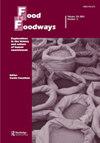分而治之:监狱和印第安保留地在美国农业帝国主义中的作用
IF 1.1
Q2 ANTHROPOLOGY
引用次数: 0
摘要
摘要本文通过农村监狱和印第安保留地这两个空间的演变来考察美国食品生产的空间历史。长期以来,这些地点为美国农业提供了在空间上固定剩余劳动力和资本的机会:从移民殖民时期对印第安人的限制,到重建后对剩余劳动力的管制,再到今天扩大罪犯租赁以填补移民劳动力短缺。本文对监狱和保留地的传统框架提出了挑战,认为它们是被排除在粮食生产和消费的核心景观之外的边缘。相反,这些“农村修复”参与了与“自由”农业的特殊中介关系,这种关系对危机驱动的资本需求和种族主义和本土主义潮流做出了回应。在美国的食物系统中,这种灵活性使得监狱和保留地不仅在空间上固定资本和劳动力,而且在种族暴力方面也不可或缺。通过这些关系,农产品价格下跌的间接暴力转化为身体和精神虐待、剥削、异化、糖尿病和营养不良等直接暴力。关键的是,这种由国家主导的暴力从白人身上转移到了非白人身上。本文章由计算机程序翻译,如有差异,请以英文原文为准。
Divide and cultivate: The role of prisons and Indian reservations in U.S. agricultural imperialism
Abstract This article examines the spatial history of U.S. food production through the evolution of two carceral spaces: rural penitentiaries and Indian reservations. These sites have long provided opportunities to spatially fix surplus labor and capital in U.S. agriculture: from the confinement of Indians during settler colonialism, through the regulation of labor surpluses after Reconstruction, to the present-day expansion of convict leasing to backfill migrant labor shortages. This article challenges traditional framings of prisons and reservations as peripheries excluded from core landscapes of food production and consumption. Instead, these “carceral fixes” participate in specially mediated relationships with “free” agriculture—relationships that respond to the crisis-driven demands of capital and currents of racism and nativism. Within the U.S. food system, this flexibility has made prisons and reservations indispensable for spatially fixing not only capital and labor, but racial violence. Through these relationships, the indirect violence of falling farm prices is translated into the direct violence of physical and mental abuse, exploitation, alienation, diabetes, and malnutrition. Critically, this state-mediated violence is redirected from white to nonwhite bodies.
求助全文
通过发布文献求助,成功后即可免费获取论文全文。
去求助
来源期刊

Food and Foodways
ANTHROPOLOGY-
CiteScore
2.20
自引率
0.00%
发文量
16
期刊介绍:
Food and Foodways is a refereed, interdisciplinary, and international journal devoted to publishing original scholarly articles on the history and culture of human nourishment. By reflecting on the role food plays in human relations, this unique journal explores the powerful but often subtle ways in which food has shaped, and shapes, our lives socially, economically, politically, mentally, nutritionally, and morally. Because food is a pervasive social phenomenon, it cannot be approached by any one discipline. We encourage articles that engage dialogue, debate, and exchange across disciplines.
 求助内容:
求助内容: 应助结果提醒方式:
应助结果提醒方式:


